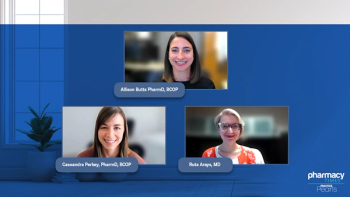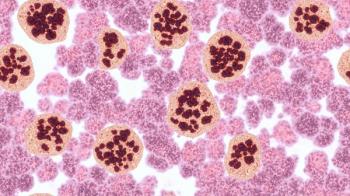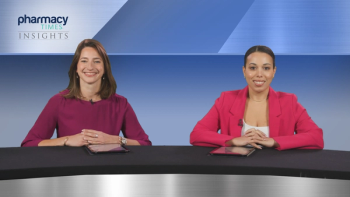
OPTIC Trial Overview
Brandon Dyson, PharmD, BCOP, BCPS, discusses the newly released 3-year data from the OPTIC trial, including the study design, baseline characteristics, and efficacy.
Episodes in this series

Brandon Dyson, PharmD, BCOP, BCPS: A quick review of the OPTIC trial, and a quick comment on some of the recent 3-year follow-up that was just released. At its core, the OPTIC trial was trying to answer 2 main questions. One, what is the appropriate dose of ponatinib? And two, is it a viable long-term TKI [tyrosine kinase inhibitor] for patients to take? Because what we know about ponatinib is that, although it’s a very effective drug, it is also a very toxic drug. In fact, when it was first released and FDA approved in 2012, for a brief period it was pulled from the market due to safety concerns, specifically with arterial occlusive events. That got it off the market, and then it came back, so there was always a bit of hesitation about, is this a viable long-term drug, and is it something I can have a patient on? Because CML [chronic myeloid leukemia] is chronic, right? These are potentially things we’re going to have patients on for years, possibly a lifetime. Can ponatinib fill that role? And if so, what’s the dose to do that where we get efficacy, but tolerability?
What the OPTIC trial did was it looked at 3 different dosing paradigms of ponatinib. These were all patients who were either resistant or intolerant to 2 TKIs, or they had the T315I mutation, which all of the first- and second-generation TKIs are not effective against. It’s called a gateway mutation, so if a patient has a T315I mutation, you’ve wiped out everything: imatinib, posatinib, bosutinib, they’re all gone, all first and second generations. Ponatinib is effective with that mutation. So that’s where it was with this trial, patients who had either failed or were intolerant to 2 TKIs, or who had the T315I mutation, and it was split into 3 dosing cohorts. The first cohort got 45 mg daily of ponatinib until they got their BCR-ABL PCR [polymerase chain reaction test result] down to less than 1%. At that point, they transitioned to 15 mg daily, so they were dose reduced, based on once they hit their molecular marker. The second arm was 30 mg and then dose reduced down to 15 mg, once they hit BCR-ABL less than 1%. Then the third arm was just 15 mg daily straight through.
What we saw with the primary end point, which was at 12 months, was that the 45-mg dose was the winner. Adverse effects were a little higher with it, certainly. But some of the especially concerning ones, like the arterial occlusive events, were relatively consistent among all 3 arms. There were more cytopenias and more of some of the other hematologic toxicities with the higher dose, as to be expected with the higher dose of a toxic drug. But there was better efficacy, more patients had achieved their milestones. Then with the recently released 3-year data, we’re seeing the same thing.
That’s the answer to the question, that the 3-year data confirm what the 1-year data said, which was 45 mg is the best dose until a patient gets to less than 1% BCR-ABL detectable, and at that point, you can transition them to 15 mg, and then they can stay on 15 mg. We don’t have anything longer than 3 years yet. But that seems like it makes it a viable option, which is fantastic news, honestly, because this was a need to fill; if we’ve knocked out most of our TKIs or the patient has a T315I mutation, what do we do if we can’t stay on ponatinib long term?
In terms of impacting treatment decisions, I think it more or less confirms what was largely already happening. If patients had failed 2 TKIs, and/or had a T315I mutation, ponatinib I think was already the front-runner, even if only by default. It’s what we were doing anyway, but we didn’t have data that confirmed we could keep patients on it long term. So, I think if nothing else, it gives us a bit of peace of mind that we can continue what we’re doing for the most part already.
Transcript edited for clarity.
Newsletter
Stay informed on drug updates, treatment guidelines, and pharmacy practice trends—subscribe to Pharmacy Times for weekly clinical insights.



















































































































































































































